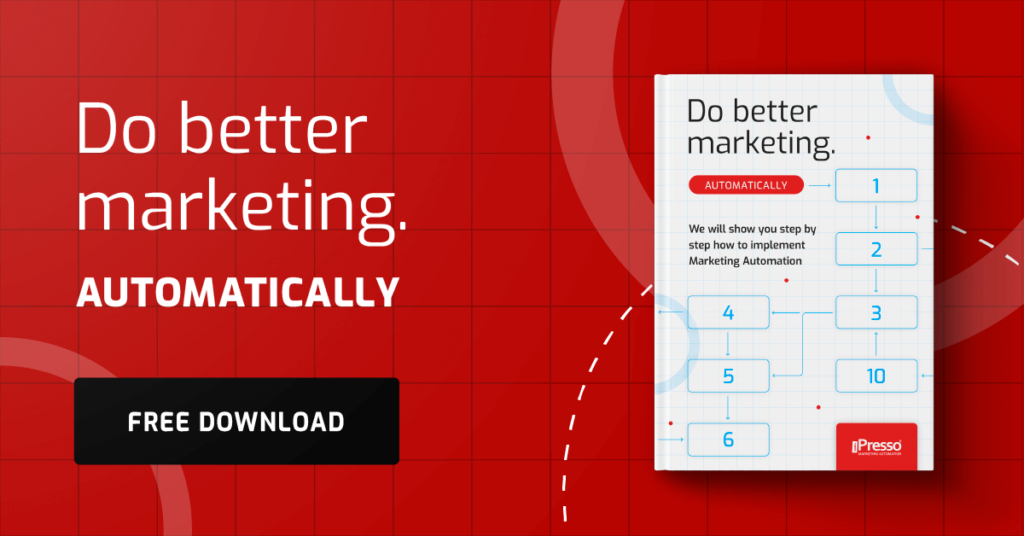Who is Your Best Customer? RFM Segmentation in iPresso Will Show You How to Find Out

Many companies make the same basic mistake: they treat all customers identically. Do you send the same promotions to a new customer and to your biggest fan? This is a simple path to wasting your budget. The solution is RFM segmentation—a super method that will allow you to divide customers into precise groups and tailor communication to their real value for your company. Do you know who your true VIP customer is?
What is RFM?
RFM segmentation is an analytical tool that allows you to assess the value of each customer based on their historical purchasing behavior. The name RFM comes from three key indicators:
R – Recency
When did the customer last make a purchase?
The shorter the break since the last purchase, the better. Such a customer is “warm” and more susceptible to another transaction.
F – Frequency
How often do they buy from us?
The more often a customer returns to you, the stronger their bond with your brand and the more loyal they are.
M – Monetary
How much money have they spent with us?
The higher the total amount spent by the customer, the more valuable they are to your company.
How to Create RFM Segmentation in iPresso?
RFM segmentation might sound technical, but thanks to advanced automation tools like iPresso, implementing it is surprisingly simple. Below you will find specific instructions on how to transfer RFM theory into marketing practice.
Step 1: Verification of Purchase Data
Before you start segmenting, make sure that iPresso receives complete transactional data from your store (e.g., through integration with your e-commerce platform). The system must know:
- the date of each purchase,
- the unique customer identifier,
- the value of each order. This data will be the basis for the automatic assessment of R, F, and M.
Step 2: Setting up Scoring or Rules
In iPresso, use the Scoring system for the automatic evaluation of each RFM pillar:
- Recency (R): Set rules that reward points for recent activity.
- Example: “If the customer purchased within the last 30 days, add 10 points.”
- Frequency (F): Set rules assessing the number of transactions.
- Example: “If the customer made more than 5 purchases in a year, add 15 points.”
- Monetary (M): Set rules based on the total value of expenses.
- Example: “If the total purchase value exceeded 5000 PLN/USD, add 20 points.”
Step 3: Creating Strategic Segments
After summing up the R, F, and M points for each customer, you can create ready-made segments that automatically update:
- VIP Customers (High R, F, M): These are your most valuable customers—they buy a lot, regularly, and come back often.
- Customers at Risk of Churn (Low R, High F and M): They were once VIPs, but haven’t bought anything for a long time. They are worth fighting for.
- New Customers (High R, Low F and M): They have just started, but are “warm” after their first purchase. The goal is to encourage a second transaction.
- Loyal Customers (Medium R, High F, Medium M): They buy regularly but don’t spend a fortune. This is a great, reliable group of customers.
How to Use These Segments in Practice? Concrete Ideas
Simply dividing customers is just the beginning. The true value of RFM lies in tailoring communication to them. See how to use segments in your marketing campaigns:
1. VIP Customers: Thank You and Reward for Loyalty
Don’t spam them with general discounts. Instead, treat them exceptionally.
Idea: Send them early access to a new collection or a dedicated, non-public discount code as a thank you for their loyalty. This builds a sense of exclusivity.
2. Customers at Risk of Churn: Rescue Campaign
You must act quickly and intensely. Show that you care about them.
Idea: Create a re-engagement campaign with the message “We miss you!” and an attractive, time-limited offer designed to encourage their return. You can offer a higher discount percentage than standard.
3. New Customers: Incentive for a Second Purchase
These customers are in the phase of testing your brand. You must convince them to build a purchasing habit.
Idea: Plan a series of welcome emails that not only thank them for the first purchase but also recommend complementary products or other bestsellers that will encourage them to make a second transaction.
Summary
RFM segmentation is not just a theory; it is a powerful tool that allows you to move from guessing to precision marketing. Thanks to it, you know exactly who your most valuable customer is and how best to speak to them.
With iPresso, you can automatically manage RFM segmentation. This directly translates into increased sales and lasting customer loyalty. Change your approach: stop sending the same message to everyone. Start investing in those who invest in you.
Do you want to increase the effectiveness of your communication and learn about the advanced reporting capabilities in our platform? Fill out a short brief and arrange a meeting with our expert!



